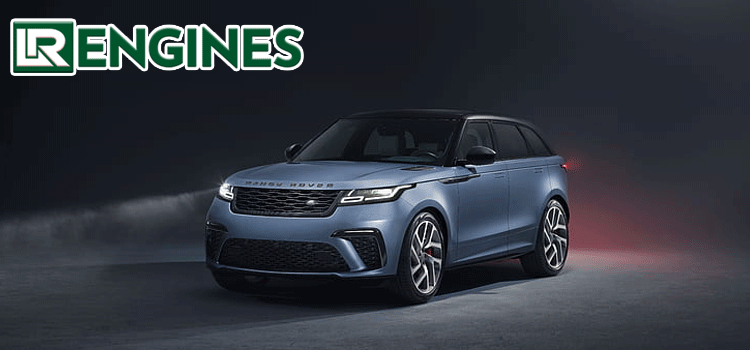Enhancing Performance: The Impact of Customer Feedback on the Development of the Range Rover 2.0 Engine

Introduction
In the ever-evolving automotive industry, customer feedback plays a pivotal role in shaping the direction of vehicle development. One such example is the Range Rover 2.0 engine, where Land Rover has continuously refined its engineering based on customer insights. This article delves into the journey of how customer feedback has influenced the development of the Range Rover 2.0 engine, shaping it into a powerhouse of performance, efficiency, and reliability.
Origins of the Range Rover 2.0 Engine
The genesis of the Range Rover 2.0 engine marks a significant milestone in Land Rover’s pursuit of innovation. Initially conceptualized as a response to the demand for improved fuel efficiency and reduced emissions, the development of this engine was rooted in the company’s commitment to sustainability and technological advancement.
Understanding Customer Needs and Preferences
Prior to the commencement of engine development, Land Rover conducted extensive market research and solicited feedback from existing Range Rover owners. Through surveys, focus groups, and direct interactions, the company gained valuable insights into the expectations, preferences, and pain points of its customer base. This comprehensive understanding laid the foundation for designing an engine that would not only meet but exceed customer expectations.
Iterative Design and Testing
Armed with customer feedback, Land Rover’s engineering team embarked on the iterative design and testing phase. Prototypes of the Range Rover 2.0 engine underwent rigorous testing under various conditions to ensure optimal performance, durability, and efficiency. Throughout this process, customer feedback served as a guiding compass, steering the development towards addressing specific concerns and enhancing overall satisfaction.
Performance Enhancement
One of the primary areas of focus driven by customer feedback was performance enhancement. Range Rover owners expressed a desire for improved acceleration, towing capabilities, and overall driving dynamics. In response, Land Rover engineers fine-tuned the engine’s power delivery, torque output, and throttle response, resulting in a significant boost in performance without compromising fuel efficiency.
Fuel Efficiency and Emissions Reduction
Environmental consciousness is increasingly becoming a priority for consumers, and Range Rover owners were no exception. Customer feedback underscored the importance of enhancing fuel efficiency and reducing emissions without sacrificing power or luxury. Leveraging advancements in engine technology and aerodynamics, Land Rover achieved substantial improvements in fuel economy and emissions, aligning with customer expectations for sustainable driving solutions.
Reliability and Durability
Reliability and durability are paramount considerations for luxury vehicle owners, who expect uncompromising performance under all conditions. Through customer feedback mechanisms such as owner surveys and service records analysis, Land Rover identified areas for enhancing the reliability and durability of the Range Rover 2.0 engine. This led to advancements in materials, engineering methodologies, and quality control measures, ensuring peace of mind for owners in terms of long-term ownership satisfaction.
Integration of Advanced Technologies
The automotive landscape is evolving rapidly with the advent of advanced technologies such as hybridization, electrification, and connectivity. Customer feedback served as a catalyst for integrating these technologies into the Range Rover 2.0 engine, aligning with the shifting preferences and expectations of modern luxury vehicle owners. Features such as hybrid powertrains, intelligent stop-start systems, and seamless connectivity interfaces were incorporated based on customer demand for cutting-edge innovation and sustainability.
Customization and Personalization
Acknowledging the diverse preferences of its clientele, Land Rover leveraged customer feedback to expand the range of customization and personalization options for the Range Rover 2.0 engine. From aesthetic enhancements to performance upgrades, owners were empowered to tailor their driving experience to suit their individual tastes and requirements. This bespoke approach not only fostered customer loyalty but also positioned the Range Rover as a symbol of personalized luxury and exclusivity. More detials about the range rover here at https://www.lrengines.co.uk/ .
Conclusion
The evolution of the Range Rover 2.0 engine exemplifies the symbiotic relationship between customer feedback and automotive innovation. From its inception to its current iteration, Land Rover has demonstrated a steadfast commitment to listening, understanding, and responding to the needs and preferences of its discerning clientele. By integrating customer insights into every stage of development, the Range Rover 2.0 engine has emerged as a testament to excellence, setting new benchmarks in performance, efficiency, and customer satisfaction in the luxury SUV segment. As the automotive landscape continues to evolve, the journey of customer-driven innovation remains a cornerstone of Land Rover’s ethos, shaping the future of mobility one feedback at a time.

